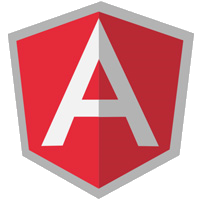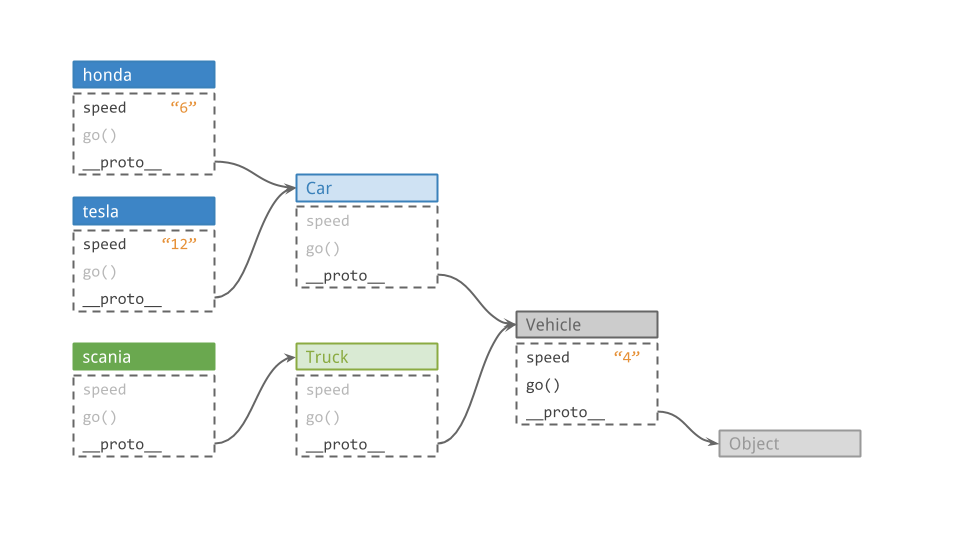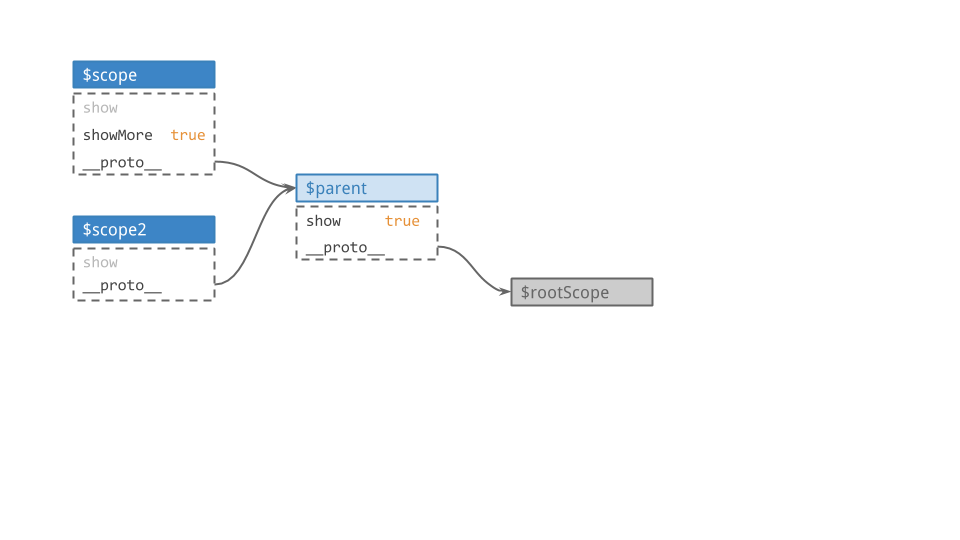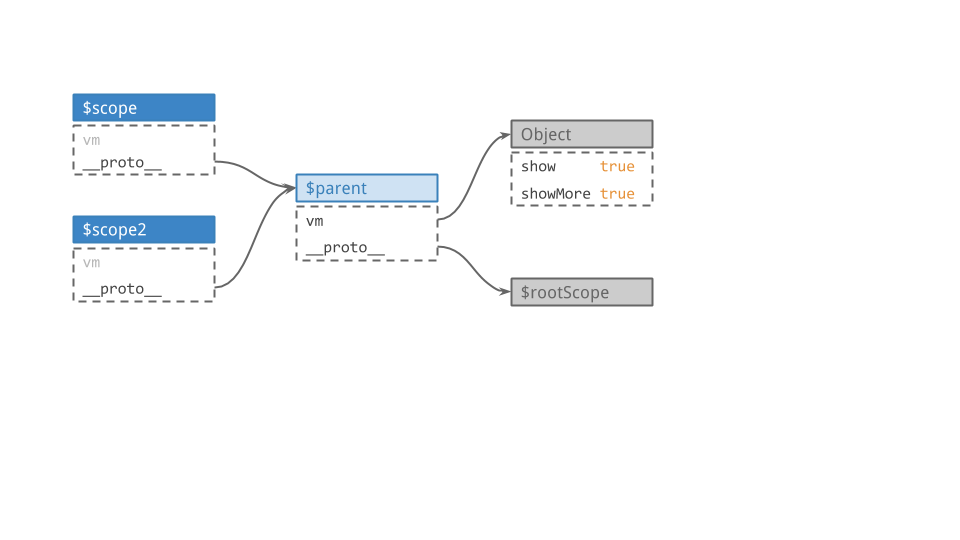
AngularJS Internals
– A look behind all the magic
by Carl Vuorinen / @cvuorinen
Carl Vuorinen
HTML enhanced for web apps!
Hello {{name}}!
Todo:
<li ng-repeat="todo in list"
ng-click="list.splice($index, 1)">
{{todo}}
</li>
Scope
$scope == POJO
Plain Old Javascript Object
$watch & $digest
red border== "pseudo" code
$scope.$watch = function(watchFunc, listenerFunc) {
this.$$watchers.push({
watchFunc: watchFunc,
listenerFunc: listenerFunc
});
};
$scope.$digest = function() {
var dirty = true;
var scope = this;
while (dirty) {
dirty = false; // reset from last iteration
scope.$$watchers.map(function (watcher) {
// execute watch function to get new value
newValue = watcher.watchFunc(scope);
// check if value has changed from last cycle
if (newValue !== watcher.lastValue) {
dirty = true;
// execute listener and store new last value
watcher.listenerFunc(newValue, watcher.lastValue, scope);
watcher.lastValue = newValue;
}
});
}
};
Scope Inheritance
Javascript prototypical inheritance
function Vehicle() {}
Vehicle.prototype.speed = 4;
Vehicle.prototype.go = function() {
return 'Vr'
+ 'o'.repeat(this.speed)
+ 'm!';
};
function Truck() {}
Truck.prototype = Vehicle.prototype;
var scania = new Truck();
scania.go(); // Vroooom!
function Car(speed) {
this.speed = speed;
}
Car.prototype = Object.create(
Vehicle.prototype
);
Car.prototype.constructor = Car;
var honda = new Car(6);
honda.go(); // Vroooooom!
var tesla = new Car(12);
tesla.go(); // Vroooooooooooom!

Scope Hierarchy
$scope.$new = function() {
var ChildScope = function() {};
ChildScope.prototype = this;
return new ChildScope();
};

<img ng-if="showMore"
src="img/mo-money.jpg">


Whenever you use ngModel, there’s got to be a dot in there somewhere. If you don’t have a dot, you’re doing it wrong. Miško Hevery (creator of AngularJS)
Controller As Syntax
angular.module('app')
.controller("SomeController", function() {
this.value = "Hello!";
});
{{ some.value }}
Controller As Syntax
angular.module('app')
.controller("SomeController", function() {
var vm = this;
vm.value = "Hello!";
vm.sayHello = function() {
alert(vm.value);
}
});
Expressions
Holy smokes, Batman!
New JS frameworks since last week: {{ lastWeekCount }}
+{{ (lastWeekCount / jsFrameworks.length * 100) | number:1 }}%
Time to
$parse
is kinda like
$parse = function(expr) {
return function(scope) {
with (scope) {
return eval(expr);
}
}
}
... except it's really not
DIY Spreadsheet using $parse
JS Bin on jsbin.com{{ interpolation }}
- find {{ and }} characters in DOM text nodes
- $parse found expressions
- create a $watch with the parsed expression
- listener updates DOM node text
+ same thing for attributes
Directives
angular.module('app')
.directive('awesomeButton', function() {
return {
scope: {
click: '&',
icon: '@'
},
transclude: true,
template: '<button class="button" '+
' ng-click="click()">'+
'<i class="fa fa-{{icon}}"></i>'+
'<span ng-transclude></span>'+
'</button>'
};
});
<awesome-button icon="bullhorn"
click="my.alert()">
Click here!
</awesome-button>
Compiling & Linking
1. compile
2. compile
3. compile
4. compile
5. link
6. link
7. link
8. link
Transclusion
Some Content
angular.module('app')
.directive('myDirective', function() {
return {
transclude: true,
template: '' +
'Title
' +
'<div ng-transclude></div>' +
''
};
});
take content
insert here
angular.module('ng')
.directive('ngInit', function($parse) {
return {
link: function (scope, element, attrs) {
$parse(attrs.ngInit)(scope);
}
};
});
angular.module('ng')
.directive('ngClick', function($parse) {
return {
link: function (scope, element, attrs) {
var expression = $parse(attrs.ngClick);
element.on('click', function() {
scope.$apply(function () {
expression(scope);
});
});
}
};
});
angular.module('ng')
.directive('ngRepeat', function($parse, $transclude) {
return {
transclude: 'element',
link: function (scope, element, attrs) {
var match = attrs.ngRepeat.match(/^\s*([\s\S]+?) ... \s*$/);
$scope.$watch($parse(match.target), function (collection) {
// locate existing items, mark items not present for removal
// remove leftover items
// update existing items' scopes
// create new elements with $transclude
// and keep a reference to their scopes
});
}
};
});
angular.module('ng')
.directive('ngModel', function() {
return {
link: function (scope, element, attrs) {
var currentValue;
element.on('keyup', function() {
if ($(element).val() != currentValue) {
scope.$apply(function () {
scope[attrs.ngModel] = currentValue = $(element).val();
});
}
});
$scope.$watch(attrs.ngModel, function (newValue) {
currentValue = newValue;
$(element).val(newValue);
});
}
};
});
Performance
The amount of data on a Scope does not affect performance.
The number of $watches and the frequency of $digest cycles
can slow things down.
30 rows x 50 cols = 1500 cells
Don't call functions that do
resource extensive or
time consuming computations
from watched expressions!
Answer: {{ deepThought.compute(question) }}
<input ng-model="question"
ng-change="answer = deepThought.compute(question)">
Answer: {{ answer }}
<input ng-model="question"
ng-change="answer = deepThought.compute(question)"
ng-model-options="{ debounce: 1000 }">
Answer: {{ answer }}
OK, let's look at the
original example again
Todo:
<li ng-repeat="todo in list"
ng-click="list.splice($index, 1)">
{{todo}}
</li>
expression
$watch
$watch
expression
expression
+ $watch
expression


by Tero Parviainen
Know Your AngularJS Inside Out
http://teropa.info/build-your-own-angularQuestions?
THE END
- Shaping up with Angular.js Code School
- New to AngularJS? Start learning here @eggheadio
- AngularJS-Learning a big list of links
- Angular Style Guide by John Papa
- Building a Spreadsheet in 20 Minutes with Angular.js by David Graunke
- Angular 2 Quickstart
- Reactive Game of Life by me


